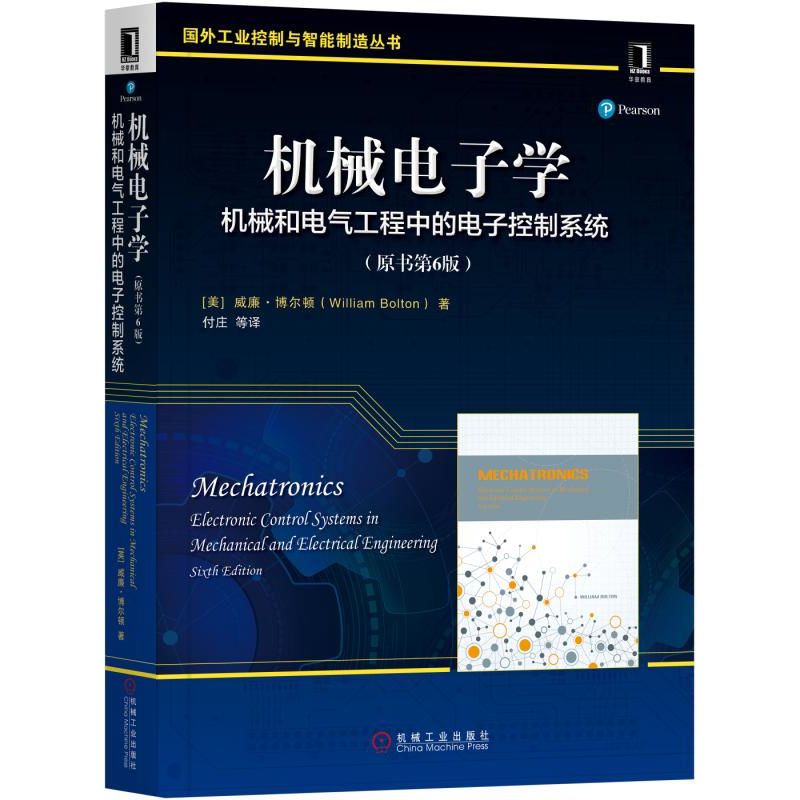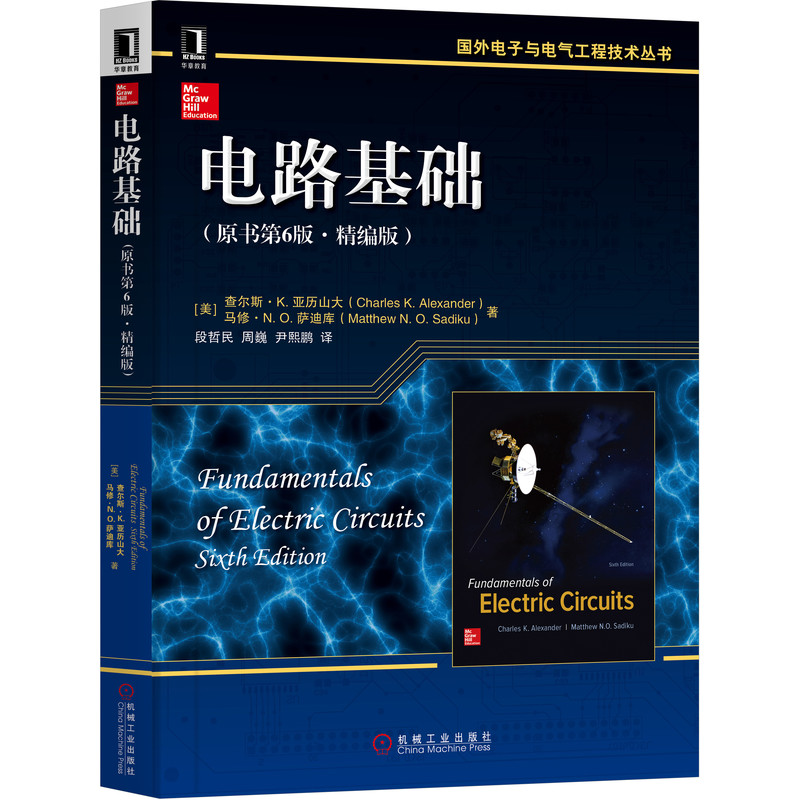普通化学(英汉双语版) / 国家一流本科课程配套教材
定价:¥180.00
作者: 杨娟
出版时间:2023-12
最新印次日期:2024-3
出版社:北京大学出版社
- 北京大学出版社
- 9787301345795
- 1版
- 513063
- 62261326-3
- 大16开
- 2023-12
- 理学
- 化学类
- 化学
- 本科
作者简介
内容简介
本书内容除涵盖大学普通化学内容的各项知识点外,还适当引入了一些化学前沿内容,有助于学生逐步适应英文化学教材的阅读和学习,并力求推动研究型人才的培养。全书彩色印刷,图片精美,以中英文页对照的形式呈现。本书以科学方法论为主线贯穿始终,具体内容分为如下九章:第1章 绪论;第2章 气体、液体、固体和溶液;第3章 化学热力学与化学平衡;第4章 化学动力学;第5章 酸碱电离平衡与沉淀溶解平衡;第6章 氧化还原平衡与电化学;第7章 原子结构;第8章 分子结构与晶体结构;第9章 配位解离平衡与配合物;附录。
本书可作为高等院校化学等专业本科一年级学生普通化学课程中英文双语教材。
本书可作为高等院校化学等专业本科一年级学生普通化学课程中英文双语教材。
目录
Contents/目录
目录
Chapter 1 Introduction 2
1.1 Science and Scientific Methods 4
1.2 Chemistry and Research 8
Chapter 2 Gases, Liquids, Solids, and Solutions 10
2.1 Simple Gas Laws and Ideal Gas Equation 12
2.2 Mixtures of Gases 16
2.3 Kinetic-Molecular Theory of Gases 20
2.4 Distribution of Molecular Speeds 26
2.5 Real Gases and van der Waals Equation 32
2.6 Properties of Liquids and Solids 36
2.7 Phase Transition and Phase Diagram 46
2.8 Properties of Solutions 52
Chapter 3 Thermochemistry and Chemical Equilibria 60
3.1 Some Terminologies in Thermochemistry 62
3.2 The First Law of Thermodynamics 68
3.3 Heats of Reaction and Enthalpy Change 74
3.4 Hess抯 Law and Standard Enthalpies of Formation 84
3.5 Spontaneity and the Concept of Entropy 90
3.6 Criteria for Spontaneous Change 102
3.7 Dynamic Equilibrium and the Equilibrium Constants 108
3.8 The Reaction Quotient and Le Ch鈚elier抯 Principle 112
3.9 Gibbs Free Energy Change and Equilibrium 114
Chapter 4 Chemical Kinetics 124
4.1 The Rate of a Chemical Reaction 126
4.2 Effect of Concentration on Reaction Rates: The Rate Laws 128
4.3 Order of Reaction 132
4.4 The Effect of Temperature on Reaction Rates 138
4.5 Theoretical Models of Chemical Kinetics 140
4.6 Reaction Mechanisms 150
4.7 Catalysis and Catalytic Chemistry 156
Chapter 5 Acid-Base Equilibria and Precipitation-Dissolution Equilibria 166
5.1 Theory of Acids and Bases 168
5.2 Self-Ionization of Water and the pH Scale 174
5.3 Ionization Equilibria of Acids and Bases 178
5.4 Common-Ion Effect and Buffer Solutions 186
5.5 Acid-Base Indicators and Titration 190
5.6 Solubility Product Constant and Its Relationship with Solubility 194
5.7 Criteria for Precipitation and Its Completeness 198
5.8 Dissolution and Transformation of Precipitates 200
5.9 Fractional Precipitation 204
Chapter 6 Redox Reactions and Electrochemistry 212
6.1 Some Terminologies in Redox Reactions 214
6.2 Electrode Potentials and Cell Potential 216
6.3 Standard Electrode Potentials and Standard Cell Potential 220
6.4 Relationship between el, G? and Redox Equilibrium Constant K 224
6.5 Potential Diagrams 226
6.6 Nernst Equation and Concentration Cells 230
6.7 Electrolytic Cells and Overpotential 234
6.8 Battery and Its Applications 238
Chapter 7 Atomic Structure 248
7.1 The Nuclear Atom 250
7.2 Quantum Theory 256
7.3 Atomic Spectra and Bohr Theory 266
7.4 The Nature of Microscopic Particles 274
7.5 Quantum Mechanical Model of Hydrogen-Like Species 280
7.6 Quantum Mechanical Results of Hydrogen-Like Species 290
7.7 Multielectron Species and Electron Configurations 306
7.8 The Periodic Law and the Periodic Table 314
7.9 Periodic Properties of the Elements 316
Chapter 8 Molecular Structure and Crystal Structure 332
8.1 Lewis Theory 334
8.2 Shape of Molecules 338
8.3 Polarity of Molecules 342
8.4 Valence-Bond Theory 346
8.5 Molecular Orbital Theory 358
8.6 Bonding in Metals and Band Theory 368
8.7 Intermolecular Forces 374
8.8 Crystal Structure 378
8.9 Various Types of Crystals and Their Structures 386
Chapter 9 Complex-Ion Equilibria and Coordination Compounds 400
9.1 Basic Concepts in Coordination Compound 402
9.2 Isomerism 406
9.3 Crystal Field Theory 414
9.4 Properties of Coordination Compounds 420
9.5 Complex-Ion Equilibria 424
9.6 Applications of Coordination Chemistry 430
Appendix 438
Appendix A Names of Chemical Compounds 440
Appendix B Table of Mathematical and Physical Constants 450
Appendix C Tables of Chemical Data 451
第1章 绪论 3
1.1 科学与科学方法 5
1.2 化学与科研 9
第2章 气体、液体、固体和溶液 11
2.1 简单气体定律与理想气体状态方程 13
2.2 混合气体 17
2.3 气体分子运动论 21
2.4 气体分子的速率分布 27
2.5 实际气体与范德华方程 33
2.6 液体和固体的性质 37
2.7 相变与相图 47
2.8 溶液的性质 53
第3章 化学热力学与化学平衡 61
3.1 化学热力学的一些术语 63
3.2 热力学第一定律 69
3.3 反应热与焓变 75
3.4 盖斯定律与标准生成焓 85
3.5 自发性与熵的概念 91
3.6 自发变化的判据 103
3.7 动态平衡与平衡常数 107
3.8 反应商与勒夏特列原理 111
3.9 吉布斯自由能变与平衡 115
第4章 化学动力学 125
4.1 化学反应速率 127
4.2 浓度对反应速率的影响:速率方程 129
4.3 反应级数 133
4.4 温度对反应速率的影响 139
4.5 化学动力学理论模型 141
4.6 反应机理 151
4.7 催化作用与催化化学 157
第5章 酸碱电离平衡与沉淀溶解平衡 167
5.1 酸碱理论 169
5.2 水的自耦电离与pH 175
5.3 酸碱电离平衡 179
5.4 同离子效应与缓冲溶液 187
5.5 酸碱指示剂与酸碱滴定 191
5.6 溶度积常数及其与溶解度的关系 195
5.7 沉淀生成与沉淀完全的判据 197
5.8 沉淀的溶解与转化 199
5.9 分步沉淀 203
第6章 氧化还原反应与电化学 213
6.1 氧化还原反应的一些术语 215
6.2 电极电势与电池电动势 217
6.3 标准电极电势与标准电池电动势 221
6.4 E池、G与氧化还原平衡常数K的关系 223
6.5 元素电势图 227
6.6 能斯特方程与浓差电池 231
6.7 电解池与超电势 235
6.8 电池及其应用 239
第7章 原子结构 249
7.1 核型原子 251
7.2 量子理论 257
7.3 原子光谱与玻尔理论 267
7.4 微观粒子的特性 275
7.5 类氢物种的量子力学模型 281
7.6 类氢物种的量子力学结论 291
7.7 多电子物种与电子组态 307
7.8 元素周期律与元素周期表 313
7.9 元素性质的周期性 317
第8章 分子结构与晶体结构 333
8.1 路易斯理论 335
8.2 分子的形状 339
8.3 分子的极性 341
8.4 价键理论 347
8.5 分子轨道理论 359
8.6 金属键与能带理论 369
8.7 分子间作用力 375
8.8 晶体结构 379
8.9 各种晶体类型及其结构 385
第9章 配位解离平衡与配合物 401
9.1 配合物的基本概念 403
9.2 异构现象 407
9.3 晶体场理论 415
9.4 配合物的性质 421
9.5 配位解离平衡 425
9.6 配位化学的应用 433
附录 439
附录A 化合物的命名 441
附录B 数理常数表 450
附录C 化学数据表 451
目录
Chapter 1 Introduction 2
1.1 Science and Scientific Methods 4
1.2 Chemistry and Research 8
Chapter 2 Gases, Liquids, Solids, and Solutions 10
2.1 Simple Gas Laws and Ideal Gas Equation 12
2.2 Mixtures of Gases 16
2.3 Kinetic-Molecular Theory of Gases 20
2.4 Distribution of Molecular Speeds 26
2.5 Real Gases and van der Waals Equation 32
2.6 Properties of Liquids and Solids 36
2.7 Phase Transition and Phase Diagram 46
2.8 Properties of Solutions 52
Chapter 3 Thermochemistry and Chemical Equilibria 60
3.1 Some Terminologies in Thermochemistry 62
3.2 The First Law of Thermodynamics 68
3.3 Heats of Reaction and Enthalpy Change 74
3.4 Hess抯 Law and Standard Enthalpies of Formation 84
3.5 Spontaneity and the Concept of Entropy 90
3.6 Criteria for Spontaneous Change 102
3.7 Dynamic Equilibrium and the Equilibrium Constants 108
3.8 The Reaction Quotient and Le Ch鈚elier抯 Principle 112
3.9 Gibbs Free Energy Change and Equilibrium 114
Chapter 4 Chemical Kinetics 124
4.1 The Rate of a Chemical Reaction 126
4.2 Effect of Concentration on Reaction Rates: The Rate Laws 128
4.3 Order of Reaction 132
4.4 The Effect of Temperature on Reaction Rates 138
4.5 Theoretical Models of Chemical Kinetics 140
4.6 Reaction Mechanisms 150
4.7 Catalysis and Catalytic Chemistry 156
Chapter 5 Acid-Base Equilibria and Precipitation-Dissolution Equilibria 166
5.1 Theory of Acids and Bases 168
5.2 Self-Ionization of Water and the pH Scale 174
5.3 Ionization Equilibria of Acids and Bases 178
5.4 Common-Ion Effect and Buffer Solutions 186
5.5 Acid-Base Indicators and Titration 190
5.6 Solubility Product Constant and Its Relationship with Solubility 194
5.7 Criteria for Precipitation and Its Completeness 198
5.8 Dissolution and Transformation of Precipitates 200
5.9 Fractional Precipitation 204
Chapter 6 Redox Reactions and Electrochemistry 212
6.1 Some Terminologies in Redox Reactions 214
6.2 Electrode Potentials and Cell Potential 216
6.3 Standard Electrode Potentials and Standard Cell Potential 220
6.4 Relationship between el, G? and Redox Equilibrium Constant K 224
6.5 Potential Diagrams 226
6.6 Nernst Equation and Concentration Cells 230
6.7 Electrolytic Cells and Overpotential 234
6.8 Battery and Its Applications 238
Chapter 7 Atomic Structure 248
7.1 The Nuclear Atom 250
7.2 Quantum Theory 256
7.3 Atomic Spectra and Bohr Theory 266
7.4 The Nature of Microscopic Particles 274
7.5 Quantum Mechanical Model of Hydrogen-Like Species 280
7.6 Quantum Mechanical Results of Hydrogen-Like Species 290
7.7 Multielectron Species and Electron Configurations 306
7.8 The Periodic Law and the Periodic Table 314
7.9 Periodic Properties of the Elements 316
Chapter 8 Molecular Structure and Crystal Structure 332
8.1 Lewis Theory 334
8.2 Shape of Molecules 338
8.3 Polarity of Molecules 342
8.4 Valence-Bond Theory 346
8.5 Molecular Orbital Theory 358
8.6 Bonding in Metals and Band Theory 368
8.7 Intermolecular Forces 374
8.8 Crystal Structure 378
8.9 Various Types of Crystals and Their Structures 386
Chapter 9 Complex-Ion Equilibria and Coordination Compounds 400
9.1 Basic Concepts in Coordination Compound 402
9.2 Isomerism 406
9.3 Crystal Field Theory 414
9.4 Properties of Coordination Compounds 420
9.5 Complex-Ion Equilibria 424
9.6 Applications of Coordination Chemistry 430
Appendix 438
Appendix A Names of Chemical Compounds 440
Appendix B Table of Mathematical and Physical Constants 450
Appendix C Tables of Chemical Data 451
第1章 绪论 3
1.1 科学与科学方法 5
1.2 化学与科研 9
第2章 气体、液体、固体和溶液 11
2.1 简单气体定律与理想气体状态方程 13
2.2 混合气体 17
2.3 气体分子运动论 21
2.4 气体分子的速率分布 27
2.5 实际气体与范德华方程 33
2.6 液体和固体的性质 37
2.7 相变与相图 47
2.8 溶液的性质 53
第3章 化学热力学与化学平衡 61
3.1 化学热力学的一些术语 63
3.2 热力学第一定律 69
3.3 反应热与焓变 75
3.4 盖斯定律与标准生成焓 85
3.5 自发性与熵的概念 91
3.6 自发变化的判据 103
3.7 动态平衡与平衡常数 107
3.8 反应商与勒夏特列原理 111
3.9 吉布斯自由能变与平衡 115
第4章 化学动力学 125
4.1 化学反应速率 127
4.2 浓度对反应速率的影响:速率方程 129
4.3 反应级数 133
4.4 温度对反应速率的影响 139
4.5 化学动力学理论模型 141
4.6 反应机理 151
4.7 催化作用与催化化学 157
第5章 酸碱电离平衡与沉淀溶解平衡 167
5.1 酸碱理论 169
5.2 水的自耦电离与pH 175
5.3 酸碱电离平衡 179
5.4 同离子效应与缓冲溶液 187
5.5 酸碱指示剂与酸碱滴定 191
5.6 溶度积常数及其与溶解度的关系 195
5.7 沉淀生成与沉淀完全的判据 197
5.8 沉淀的溶解与转化 199
5.9 分步沉淀 203
第6章 氧化还原反应与电化学 213
6.1 氧化还原反应的一些术语 215
6.2 电极电势与电池电动势 217
6.3 标准电极电势与标准电池电动势 221
6.4 E池、G与氧化还原平衡常数K的关系 223
6.5 元素电势图 227
6.6 能斯特方程与浓差电池 231
6.7 电解池与超电势 235
6.8 电池及其应用 239
第7章 原子结构 249
7.1 核型原子 251
7.2 量子理论 257
7.3 原子光谱与玻尔理论 267
7.4 微观粒子的特性 275
7.5 类氢物种的量子力学模型 281
7.6 类氢物种的量子力学结论 291
7.7 多电子物种与电子组态 307
7.8 元素周期律与元素周期表 313
7.9 元素性质的周期性 317
第8章 分子结构与晶体结构 333
8.1 路易斯理论 335
8.2 分子的形状 339
8.3 分子的极性 341
8.4 价键理论 347
8.5 分子轨道理论 359
8.6 金属键与能带理论 369
8.7 分子间作用力 375
8.8 晶体结构 379
8.9 各种晶体类型及其结构 385
第9章 配位解离平衡与配合物 401
9.1 配合物的基本概念 403
9.2 异构现象 407
9.3 晶体场理论 415
9.4 配合物的性质 421
9.5 配位解离平衡 425
9.6 配位化学的应用 433
附录 439
附录A 化合物的命名 441
附录B 数理常数表 450
附录C 化学数据表 451







